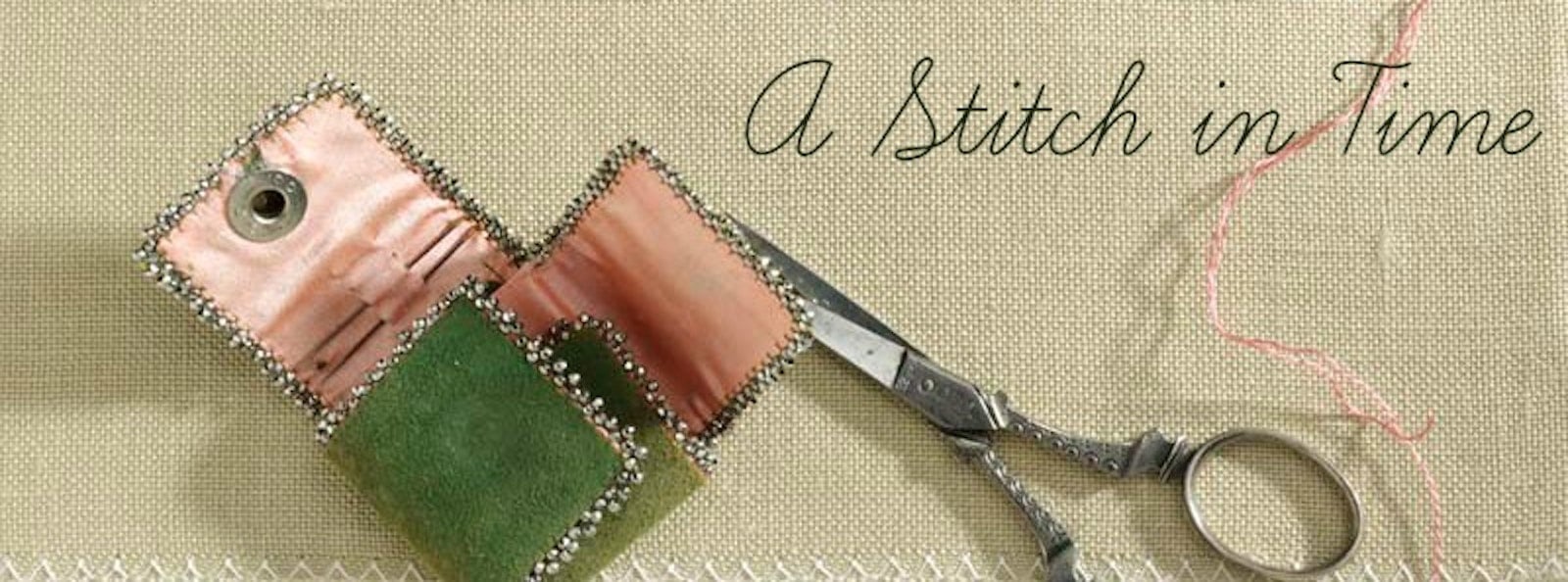The Basque stitch, also known as the twisted daisy border stitch, has its origins in the Basque country, located in the western Pyrenees that span the Franco- Spanish border. According to Jacqueline Enthoven in her book The Stitches of Creative Embroidery (New York: Van Nostrand Reinhold, 1964), the Basque stitch most likely dates to the eighth century, when the Moors occupied Spain, and it is often used alongside the Basque knot. In fact, Enthoven discovered that the two techniques often are described interchangeably, with some using the term “Basque stitch” to describe the twisted loop stitch (Figures 1 and 2) and others using the term to describe the knotted stitch (Figures 3 and 4). Enthoven, however, cites the curator of the Musée Basque in Bayonne, France, who confirms that the true Basque stitch is indeed the twisted loop.
The twisted-loop Basque stitch (Figure 1) must be worked from left to right with the needle always pointing vertically; this results in a series of double vertical straight stitches on the back of the fabric. The loop itself should remain as a distinct twisted loop, so care must be taken not to pull the loop too tightly. The size of the stitch and the distance between the completed stitches may vary (Figures 1 and 2). A line of Basque stitches resembles a series of chain stitches worked vertically and attached by a stitch at the top of each twisted chain stitch. Superficially, the Basque stitch appears complicated but it is actually easy to stitch after only a little practice. Use the Basque stitch for straight and curved lines, scroll shapes, and to outline motifs. It is shown to best advantage when stitched with white or another light-colored thread on a dark background.
Left to Right: Figures 1 and 2.
The Basque stitch resembles the petal stitch in appearance but appears less heavy and is quicker to work. As stated previously, it is always worked left to right, whereas the petal stitch is worked only right to left. The stitching components also are different.
The Basque knot (Figure 3) stitch, also known as the knotted loop stitch, is similar to the Palestrina knot and actually may be a variation. The Basque knot stitch is considered to be of more recent origin than the Basque stitch. Worked from right to left, it resembles a reverse Palestrina knot with “wings.” Slightly snug the first loop of the knot against the working thread before making the second loop. Hold tension on the working thread with your thumb. The Basque knot may be used for straight or curved lines and outlining designs as well as for fillings. It may be used as an isolated stitch (Figure 4) or a series with the distance between the knots varying. When the rows dovetail, the Basque knot stitch becomes a solid textured filling.
Left to Right: Figures 3 and 4.
A firm thread, such as DMC’s Cordonnet Spécial, Spécial Dentelles, Broder Spécial, or pearl cotton sizes 8 and 12, works best for both the Basque stitch and the Basque knot stitch; it helps to accent their distinctive appearance. But do try experimenting with the more flexible metallic threads for a modern look.
Deana
This ninth installment of Deanna’s stitch tutorials originally appeared in the May/June 2003 issue of PieceWork, along with instructions for a sweet thimble holder with a Quaker motif (a companion to the needle holder with a similar motif in the January/February 2003 issue) and much more. Deanna is PieceWork’s needlework technical editor; she previously was the editor of The Needleworker magazine. Stay tuned for another stitch tutorial from Deanna next week! Read the entire "Stitch in Time" series!
Featured Image: Scissors and needle case courtesy of Loene McIntyre. Photo by Joe Coca.



